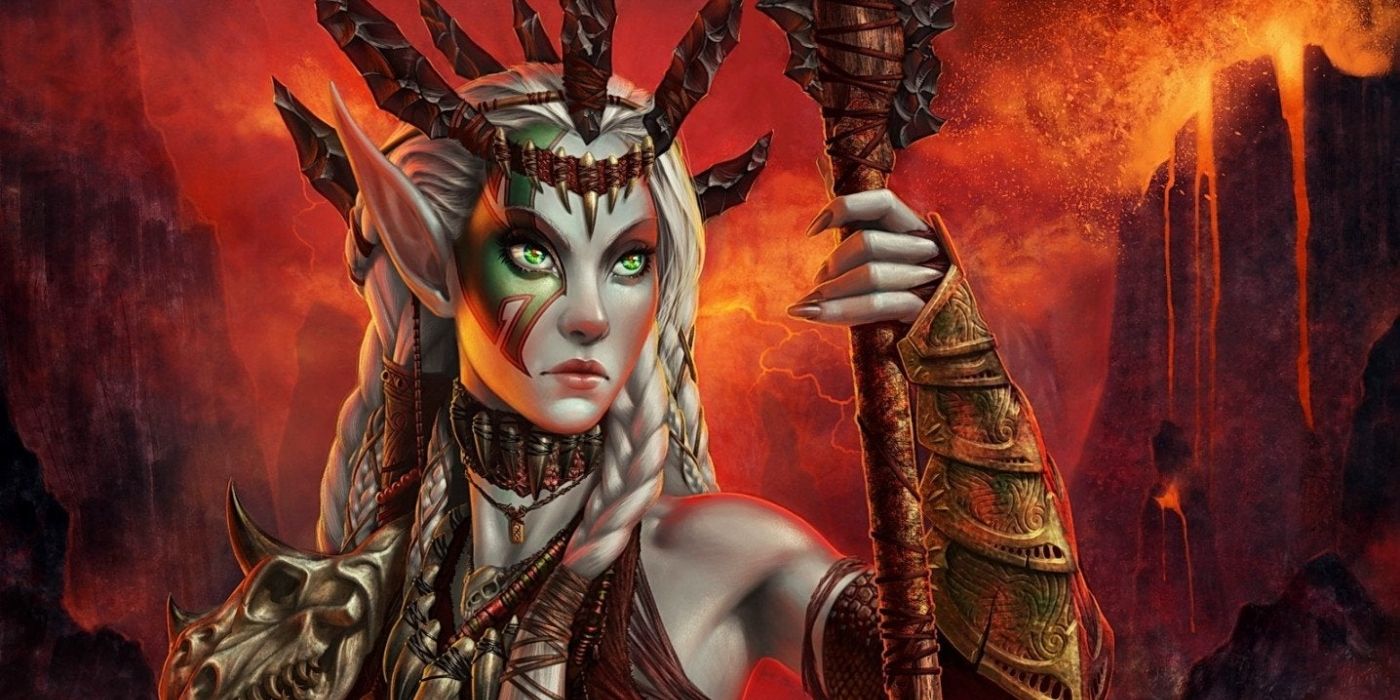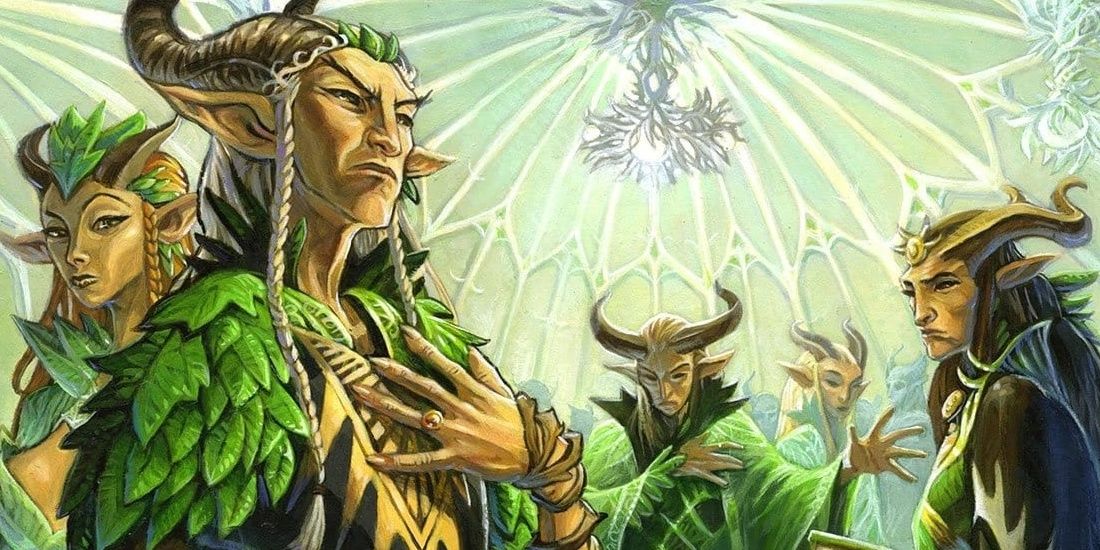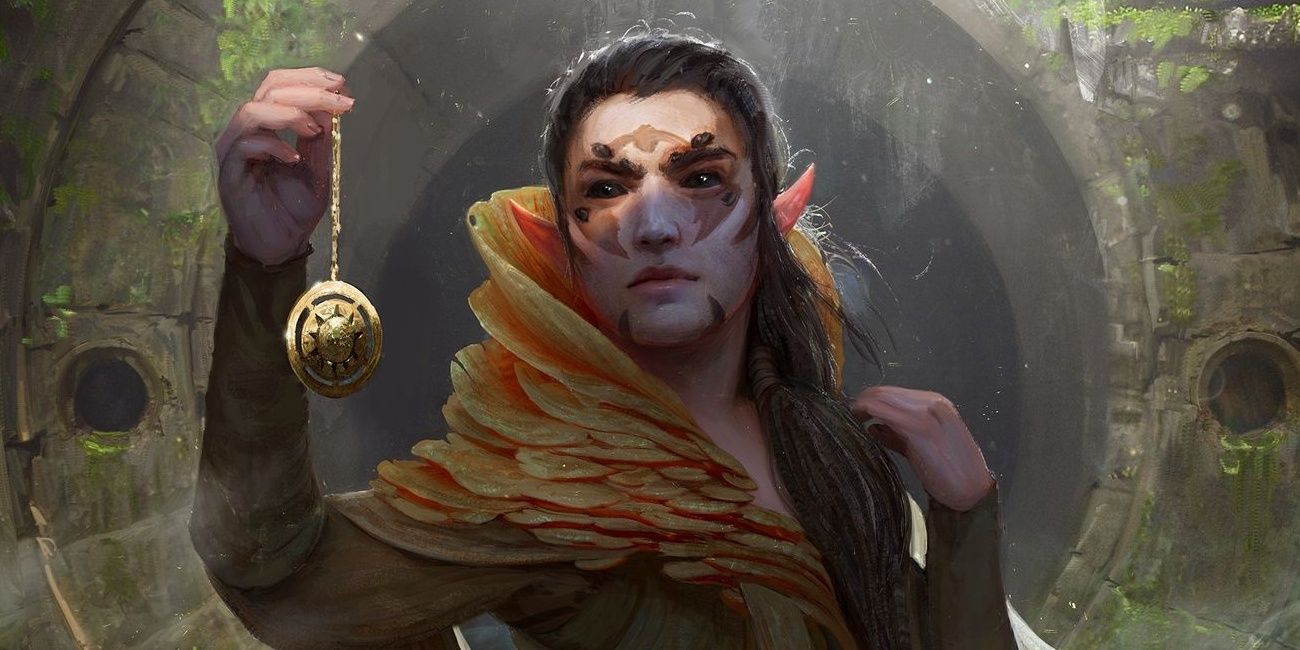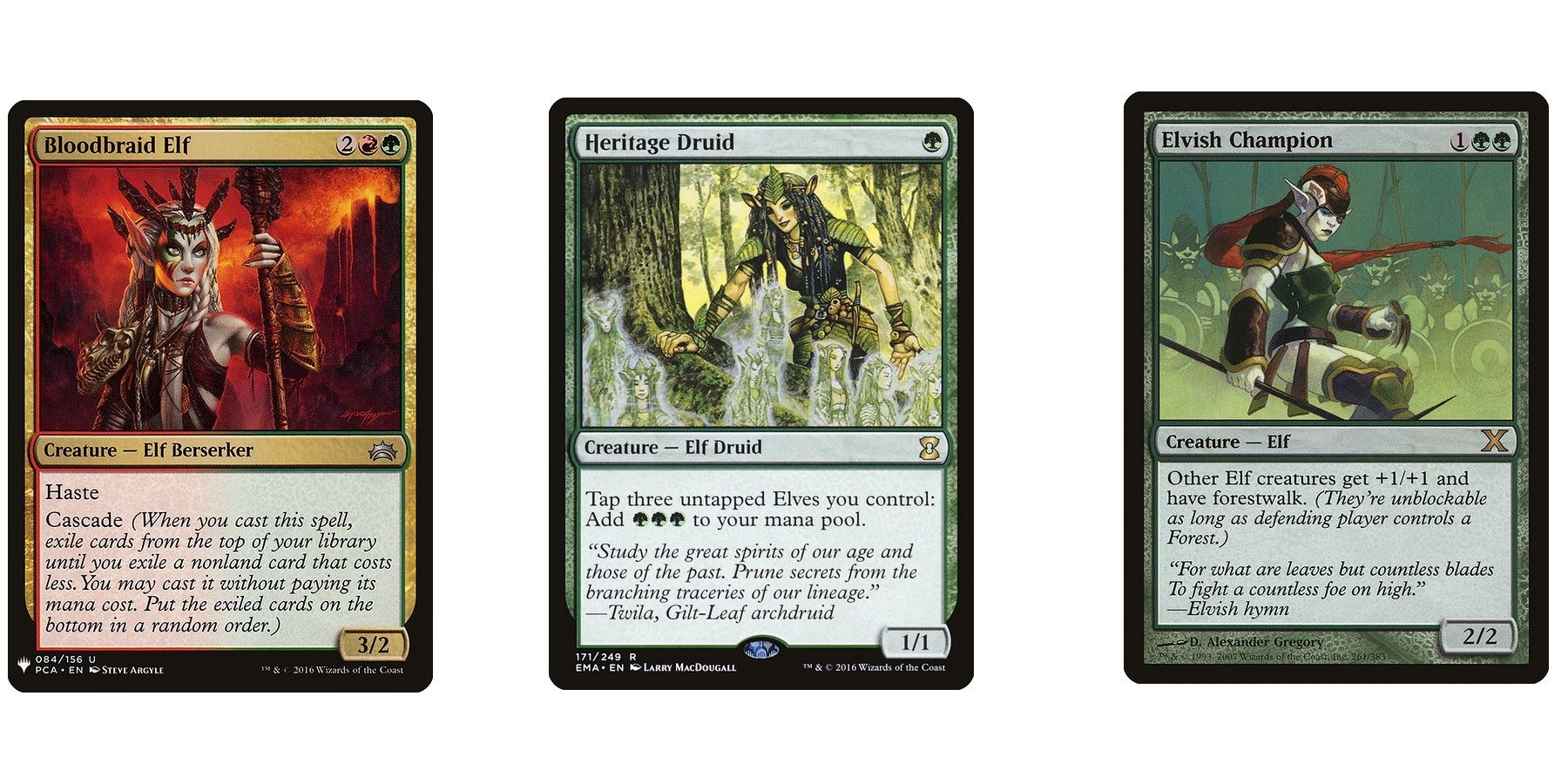Magic: The Gathering has an incredibly deep card pool, but some patterns and trends help keep all these diverse cards together, such as creature tribes or cards designed for certain deck archetypes. Tribal decks have been popular in the game for many years now, and some of the best-established tribes include the reckless goblins, the bloodthirsty vampires and, of course, the noble elves.
The Elf creature type is as old as the game itself, and it didn't take too long for the game to reinforce the Elf tribe with lord creatures, efficient attackers, support instants and sorceries, and even utility lands and Planeswalkers. The Elves of the Multiverse appear on quite a few planes too.
The Elves of the Multiverse
Lorwyn is a sunny storybook plane that is dominated by its local elf tribe. The elves here are balanced between green and black mana, and they take arrogant pride in their hunting prowess and beauty. These elves created a hierarchy based on beauty, and they use this as a pretext for hunting unsightly intruders in the Gilt-Leaf Forest, labeling them as "eyeblights." As a result, most other tribes on Lorwyn fear and resent these elves, who tend to hunt in packs, aided by hunting dogs and wolves. They are also skilled assassins and infiltrators, and they have a loose relationship with the treefolk race here, since they have the common bond of the forest.
The Naya shard of Alara is also home to many elves, who are dominant in green mana but able to access red and white mana as well. Like on Lorwyn, these elves rule their home plane, and they tend to create ever-shifting alliances and treaties in the Nayan forest canopies. These elves often look after the gargantuan beasts of Naya like the humans do.
When the five shards of Alara came crashing back together, most Nayan elves stood ready to defend their home from otherworldly intruders. However, a few of them wandered over to the plane of Jund and became red-green berserkers. They embraced the "bloodbraid" warrior culture that the Jund humans practiced and never looked back.
Zendikar is also home to a few elf tribes, from the Joraga to the Mul Daya peoples. Nissa Revane is an elf from Zendikar, and in her adolescence, she awoke her planeswalker Spark and began her journey across the Multiverse. She tried to save Zendikar by allowing the fearsome Eldrazi out of their hedron prison so they would depart Zendikar, but Nissa's plan backfired. The Eldrazi stayed on Zendikar, feasting on everything in sight. Nissa helped the other elves and her fellow planeswalkers fight back, and the newly formed Gatewatch finally finished off the Eldrazi for good, sparing Zendikar's elves from extinction.
The plane of Kaladesh is also home to elves. These tan-skinned humanoids revere nature, but they also enjoy machines and tinkering, like most other inventors and innovators on this plane. Using nature itself as inspiration, Kaladesh elves elegantly create replicas of nature's finest flora and fauna, astounding any competition's judges with their flawless recreations of elephants, tigers, deer, snakes and more. In fact, the elves play a role in the eternal cycle of aether on this world.
The city-plane of Ravnica is also home to many elves, who are often found in the Selesnya Conclave guild, the Golgari Swarm guild and the Simic Combine guild -- all of which involve green mana. Selesnya elves tend to be archers or knights riding into battle on the backs of oversized wolves, and dark Golgari elves embrace black and green mana to help Ravnica recycle and break down dead bodies and rotting plant matter. Simic elves embrace the possibilities of lab-accelerated evolution, becoming almost unrecognizable as they add fins, tentacles, horns, wings and more to their bodies.
The Elf Tribe in the Game
The Elf tribe is heavily based on green mana, and as a result, this strong and pervasive tribe is symbolic of that color, even more so than the Beast and Treefolk tribes. Not every block contains Elves, but many do, such as the Core Sets, which are meant to be baseline Magic. Elves may sometimes splash other colors, often red based on the setting of the block. For example, the Alara Reborn set represented the five shards of Alara blending, and Bloodbraid Elf (a Jund deck powerhouse) shows how Naya and Jund can overlap.
In the Lorwyn and Morningtide sets, Elves appeared in both green and black mana, and the same was true of the Elf tribe found in the Commander Legends draft set. Elves from the Ravnica block could splash either black, white or blue mana for the Golgari, Selesnya and Simic guilds respectively. In the game, Elf cards tend to cost between one and four mana. They are somewhat small creatures that can pump each other up with "lord" effects, such as the classic Elvish Champion and Elvish Archdruid.
Elves sometimes get their own decks, such as the powerful Elf deck in Modern. It's not a dominant force in the Modern meta, but this deck can trample all over enemy decks that aren't ready for it. Heritage Druid and Nettle Sentinel are a sure way to generate explosive mana and put a lot of Elf warriors on the table quickly, along with Collected Company. Only certain sideboard cards can hope to slow down this mighty tribal deck.




